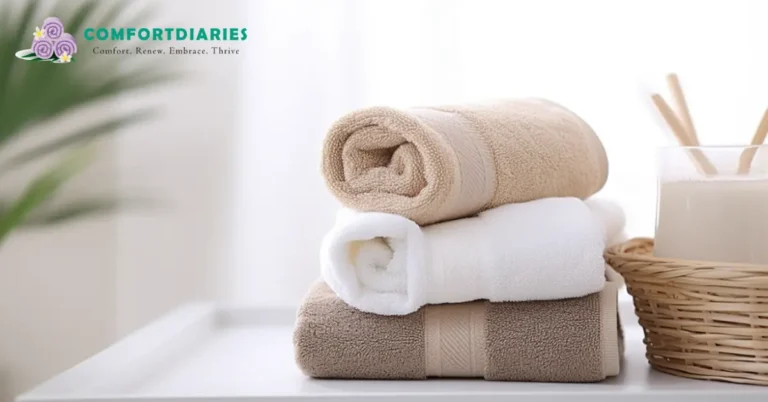The Ultimate Guide to Choosing Perfect Beach Towel

A beach towel is more than just a functional item to dry off with. It is a piece that accompanies you on every seaside adventure. Whether it serves as a soft surface to lounge on, a barrier between you and the sand or a way to dry off after a refreshing dip in the ocean, the right beach towel is a fundamental part of any beach-goer. As such, choosing perfect beach towel requires thoughtful consideration of your preferences and the various features that can enhance your beach experience.
In the search for the ideal and perfect beach towel, we often find ourselves going through an overwhelming array of options, from luxurious textures to sand-repellent and quick-drying innovations. This guide is designed not only to navigate the various attributes like material, size, absorbency and durability but also to dive into the more subjective aspects such as style, design, and color. Understanding how each element plays a role in the overall beach experience will ensure that you select a beach towel that is a perfect balance of form and function.
Make Sure It Absorbs Water
The primary function of a beach towel is to dry you off after a jump in the ocean or a cool dip in the pool. Therefore, the first characteristic to assess is its absorbency. The best beach towels are not only soft to the touch but also soak up water efficiently. Look for towels that are made from cotton with a higher GSM (grams per square meter) for superior moisture-absorbing properties. Egyptian and Turkish cotton are known for their high absorbency and soft fibers, which make them comfortable on the skin.
Check Comfortability
Comfort is key when it comes to lounging on the beach for hours on end. Scratchy or stiff towels can quickly lead to discomfort. Terry cloth, velour and microfiber are materials that are not only soft but also gentle on the skin, providing a luxury and comfortable surface to lie on. However, it is important to keep in mind that some people may have personal preferences for the type of texture they find most comfortable. If possible, do a touch test before buying or read customer reviews to measure the towel’s comfort level.
Check Towel Thickness
The thickness of a beach towel can impact both its absorbency and drying time. Thicker towels with a high GSM are more absorbent but take longer to dry, which can be a downside if you are on the move. On the other hand, thinner towels dry quicker but may not be as effective at drying you off. A mid-weight towel (around 400-600 GSM) strikes a balance, providing good absorbency without sacrificing too much in terms of convenience. For those who prefer a heavier towel, keep in mind that it will be a bit bulkier to carry and may take more time to dry.
Size Matters
The size of your beach towel can significantly affect how you use it. A generous size allows for full-body coverage, providing an ideal space for sunbathing or a comfortable spot to sit by the shore. A length of 60 to 70 inches and a width of 30 to 40 inches is generally considered enough, but you may want to opt for a larger size if you are particularly tall or enjoy lie down. Additionally, consider if you’ll be using the towel for two people, in which case a jumbo-sized towel might be the better choice.
Style and Design
While style and design may not be as functional as absorbency or size, they can certainly add to your beach towel experience. Beach towels come in a wide array of colors, patterns, and themes, allowing you to showcase your personality or fit in with a particular beach aesthetic. Vibrant colors and bold prints can make a statement, while sad tones or classic stripes can offer a more timeless look. Remember that darker colors can retain heat more than lighter colors, which could affect how the towel feels on your skin on extremely hot day.
Make Sure It’s Affordable
Beach towels can range from budget-friendly basics to high-end, luxurious options. Set a budget and consider how much use you will get out of the towel. If you are a frequent beach-goer, it might be worth investing a bit more in a towel that will last season after season. However, there are plenty of affordable options that offer decent quality and can be replaced without breaking the bank. Look out for sales and consider buying multiple towels for a bargain, ensuring you always have a fresh one on hand.
Make Sure It’s the Right Color
Color is not just about aesthetic appeal but it can have practical benefits too. Darker colors tend to show less dirt and are less likely to appear stained after use. They can also help retain heat, which could be beneficial on a windy beach. Lighter colors are more reflective and can help keep you cool. Patterns and designs can also hide stains and sand better than a solid color. Ultimately, the choice of color is personal, so pick one that not only looks good to you but also complements your overall beach gear.
Pick Quality Beach Towels
Quality is most important when choosing a beach towel. A well-made towel will resist fading, shrinkage and pilling, ensuring it looks great and feels good for multiple summers. Double-stitched and higher quality materials are indicators of a durable product. If possible, read reviews to see what previous buyers have to say about the longevity of their towels. Remember, quality is a factor that you will be able to feel with each use. So it’s worth the extra consideration.
Check its Durability
Durable beach towels can withstand the rough and tumble of beach life. They will be dropped in the sand, washed often and used in a variety of outdoor conditions. Look for towels with reinforced edges and double-stitched seams. These features will prevent fraying and the unraveling of the towel over time. Additionally, consider how well the towel holds up after numerous washes. towels that maintain their softness and shape will be the most durable and it will help you in choosing perfect beach towel.
Check the Material of the Beach Towel
The material of your beach towel not only affects its feel but also its performance. Cotton towels are the traditional choice, offering a soft, absorbent texture. Egyptian and Turkish cotton are among the best quality options for beach towels. Microfiber towels have become more popular for their lightweight and quick-drying properties, making them ideal for frequent travelers. However, they may not be as luxurious as their cotton equivalent. Ultimately, the material you choose should align with your priorities for your beach experience.
Quick-Drying and Sand-Repellent Features
After a day of fun in the sun, a quick-drying beach towel can be a game-changer. Towels with quick-dry technology or those made with microfiber can be folded up and packed away without adding too much weight to your beach bag. Some beach towels are designed to repel sand, making it easier to keep your space free of debris. These features offer practical benefits that can make your beach outings more enjoyable and less oppressive.
Summary
Choosing perfect beach towel is a personal process that requires consideration of several factors, ranging from the practical aspects of absorbency and durability to the more aesthetic elements of color and design. By taking the time to assess your needs and preferences, you will be able to find a beach towel that not only dries you off but also adds comfort and style to your beach days. Whether you go for a classic striped cotton towel or a high-tech microfiber option, the perfect beach towel is out there waiting to be your companion on sandy shores around the world.
FAQS
What Are the Key Features to Look for in a Quality Beach Towel?
When searching for a quality beach towel, you should prioritize three main attributes: absorbency, durability, and the quality of the material.
- Absorbency is crucial as it determines how well the towel will dry you off after a swim. Look for dense, luxurious fabrics that feel heavy for their size.
- Durability is important for withstanding the frequent washes and exposure to sun and sand. Select towels with reinforced edges and double stitching.
- Quality of the material will affect both of these factors, as well as the feel of the towel. High-grade cotton like Egyptian or Turkish or a good quality microfiber will serve you well.
How Can I Ensure My Beach Towel’s Longevity?
To ensure your beach towel lasts over many seasons, consider these three tips:
- Follow the manufacturer’s washing instructions to maintain the integrity of the fibers.
- Avoid using harsh chemicals like bleach that can break down the fabric and cause colors to fade.
- Allow your towel to air dry in the open whenever possible instead of using a tumble dryer, which can be harsh on towels over time.
What Makes a Beach Towel Quick-Drying and Why Is It Significant?
A quick-drying beach towel is significant as it minimizes the time you have to wait before you can pack it away, reducing the risk of mildew and odors associated with damp towels.
- Materials such as microfiber are known for their quick-drying properties due to their lightweight and highly absorbent fibers.
- Towels designed with thinner fabrics and an open weave allow more air flow, speeding up the drying process.
- This feature is particularly valuable for travelers and those who frequent the beach as it allows for multiple uses throughout the day and easier transport.
Can Color and Design Affect the Functionality of a Beach Towel?
Yes, the color and design of a beach towel can have practical impacts beyond aesthetics.
- Darker colors and patterns are better at hiding stains and sand, making your towel look cleaner for longer.
- Some colors, like black or navy can retain more heat which could be beneficial for staying warm on cooler days.
- Lighter colors reflect sunlight, potentially keeping the surface cooler on hot days, which can be a relief when returning to your towel after a swim.
Are Sand-Repellent Beach Towels Worth the Investment?
Investing in a sand-repellent beach towel can remarkably enhance your beach experience.
- Sand-repellent towels are designed with a type of fabric that allows sand to slide off easily, which keeps your beach space cleaner.
- They are ideal for people who enjoy sunbathing or reading on the beach, as they help to maintain a sand-free surface for relaxation.
- This feature also makes the towels easier to clean and maintain, as less sand is taken home after your day out.






